
Skim coating drywall is a technique used to smooth out the surface of your drywall, giving it a professional and polished look. It’s an essential skill for any DIY enthusiast or homeowner looking to improve the appearance of their walls. Whether repairing damaged drywall or preparing for a new paint job, the skim coating is valuable. In this beginner’s guide, we’ll walk you through how to skim a wall for beginners.
How To Skim Coat Drywall For Beginners
What is Skim Coating? How do you skim-coat drywall?
Skim coating is the process of applying a thin coat of plaster or mud to a wall in a thin layer. The goal is to repair the wall to make it nice and smooth. Also, it is easy to do and delivers great results for rougher surfaces. As a beginner, you will be well-equipped to get the job complete. So, how do you skim-coat a wall for beginners? Let us find out how the process goes!
Step 1: Prepare the Surface
Before you skim-coat a wall, you have to prep the room before interior painting. Ensure the drywall surface is clean and free of any dust, dirt, or debris.
- First, move all your furniture and wall decorations, and cover the floor with a drop cloth.
- Also, remove all plastic coverings from the electrical sockets and cover them with plastic (you don’t want any electrical issues).
- Then, repair or replace drywall holes if you notice any.
- Lastly, remove any nails from the wall and fill the holes with a joint compound. This is how to fix drywall holes,
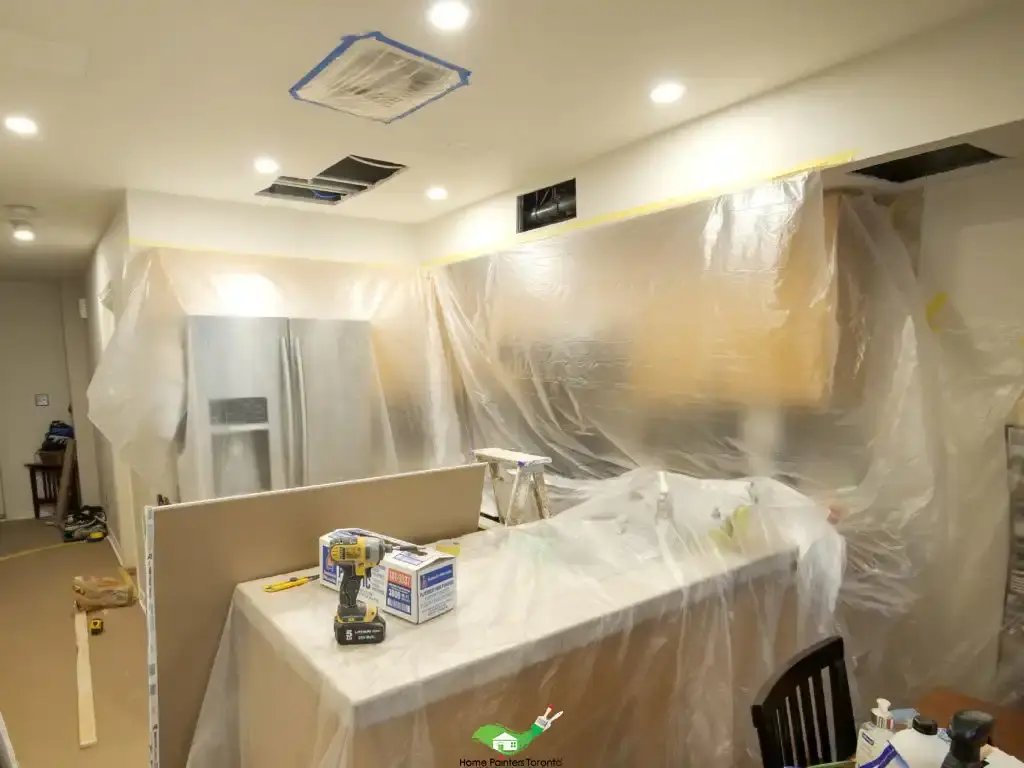
Skim Coating Drywall Vs Skim Coating Plaster
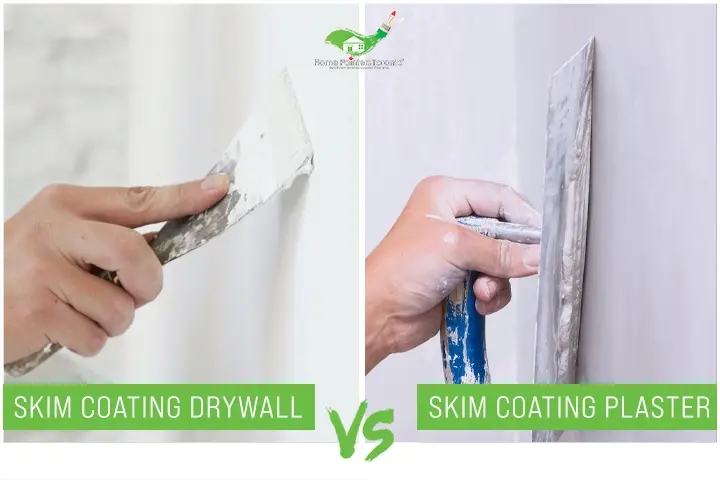
It is important to note the differences between skim coats and plaster. Skim coat is like a plastering method in that it is a thin layer of coat applied on a plastered wall. The skimming is done on a plaster wall. This process is quite challenging, so maybe enlisting the help of painting companies would be ideal. This is because, in skimming, the finish is the main goal. Providing a smooth and seamless surface ready to decorate is also important.
Plastering, on the other hand, means skimming goes straight under this process. Skimming is essentially a part of the process of plastering. You cannot have one without the other. There are various types of plastering methods:
- Lime Plaster: This is a traditional plastering solution that mixes sand and lime in 1/3 proportions.
- Cement Plaster: Cement, sand and water are the main components of plaster mix. It is used on walls where masonry work is completed.
- Gypsum Plaster: This process uses a thick coat of sulphate and a mixture of water. It is used as another plaster coat of cement and lime. Also, it provides high resistance to shrinkage and cracks.
Skim Coating Walls & Ceilings
Step 2: Mix the Joint Compound
So, how do you skim-coat drywall? Let the process begin! First, grab a bucket of joint compound and stir with an electric drill until you feel it is smooth. When that happens, use a premixed plaster. CGC 20 is a familiar product for all, and you can get it from Home Depot or other hardware stores. The compound should be consistent, like cake batter.
Step 3: How to Apply Skim Coat
Scoop up the compound onto your hawk and apply it on the wall in a vertical direction (use a drywall knife). Ensure the wall is smooth and let it dry for several hours.
Step 4: Sanding Drywall
Once the first coat of plaster is completely dry, sand smooth with a pole sander and 200-220 grit sandpaper.
Then, apply a second coat of joint compound using your drywall knife, following the same technique. The second coat should be thinner than the first, focusing on smoothing out any remaining imperfections.
Feather the edges to transition seamlessly between the compound and the drywall. Let the second coat dry completely before lightly sanding the surface once more.
This final drywall sanding will ensure a perfectly smooth finish, ready for priming and painting.
Remain Cautious
As a beginner doing this process, mistakes are bound to happen. That is why it is vital to check your work carefully. Check for any imperfections in the walls or ceilings. If you need to repeat any prior steps, you should do that. You might even need more than two coats of plaster to ensure the surface is completely smooth. Then, switch from a vertical to a horizontal application to obtain an even coverage of the wall. Once that happens, the surface will instantly feel smooth.
Step 5: Prime and Finish Skim Coat Wall
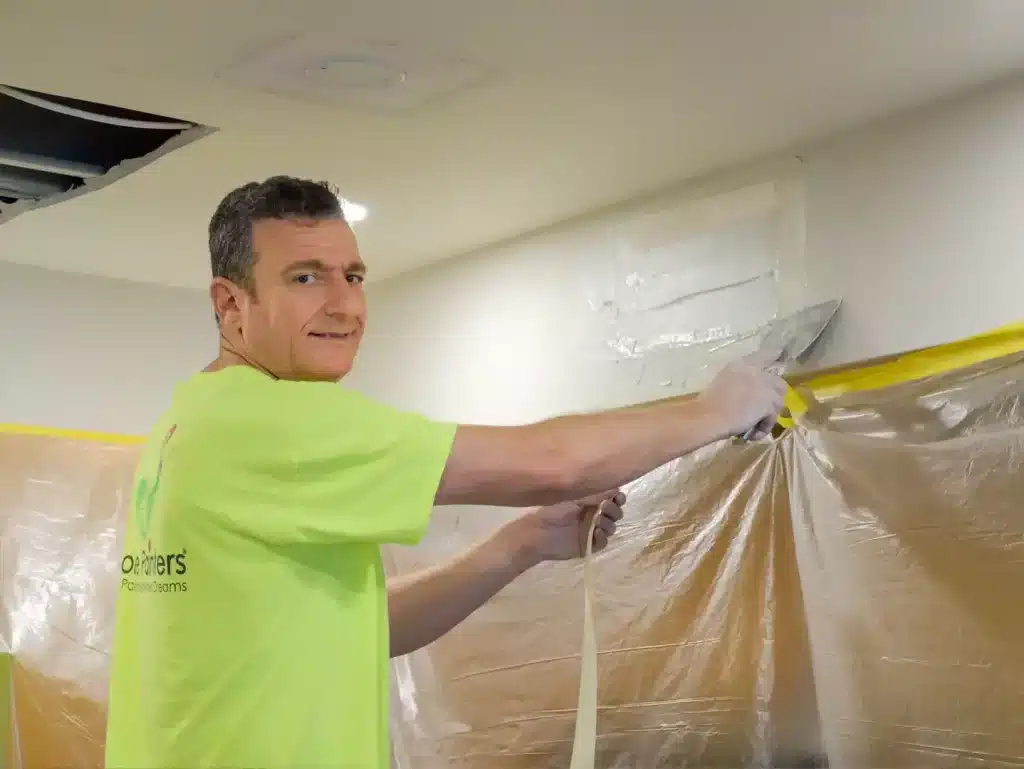
Now we are in the priming section! If you are satisfied with your skim coat plastering work or the work of the professional painters you hired, you can apply a latex-based primer to seal everything in. Let it dry, then recheck it for any imperfections. If you notice any problems, repeat the same steps to ensure a smooth and complete finish.
The last step of this process is to apply a finishing coat. Once you feel the surface is smooth, apply a finish coat of paint or wallpaper, depending on your chosen application. Then the process is complete! You now have brand-new smooth walls!
The Challenges of Drywall Skim Coating: What You Need to Know
While skim coating can produce excellent results when done correctly, it can also be quite challenging for those new to the process or lacking the necessary skills and experience. Here are some of the reasons why drywall skim coating can be a difficult task.
1. Achieving the Right Consistency
One of the most challenging aspects of skim coating is achieving the proper consistency of the joint compound. The compound must be smooth and easy to spread but not too thin or runny.
Achieving the right consistency requires careful mixing, attention to detail, and familiarity with the product used. If the compound is too thick, it will be difficult to spread and may leave visible lines and ridges on the surface. Conversely, if it’s too thin, it may not adhere properly to the drywall and could lead to sagging or uneven coverage.
2. Applying the Compound Evenly
Skim coat drywall requires a steady hand and precise technique to apply the joint compound evenly across the surface of the drywall. This can be particularly challenging for beginners or those with limited experience. As it requires a certain level of skill and practice to master.
Uneven application can result in visible lines, ridges, and other imperfections that will be noticeable once the wall is painted or wallpapered.
3. Feathering the Edges
Another challenge of skim coating is feathering the edges of the joint compound to create a seamless transition between the compound and the drywall surface.
This requires a gentle touch and blending of the compound smoothly without leaving any noticeable lines or ridges. Failure to feather the edges properly can lead to a noticeable difference in texture between the skim-coated areas and the rest of the wall.
4. Drying and Sanding
Drywall skim coating involves multiple steps, including allowing the joint compound to dry completely between coats and sanding the surface to create a smooth, even finish. Both of these steps can be time-consuming and require patience and attention to detail.
If the compound is not allowed to dry fully before sanding, it can lead to a messy, uneven surface. Similarly, if the surface is not sanded properly, it can result in a rough, uneven texture that will be visible once the wall is painted or wallpapered.
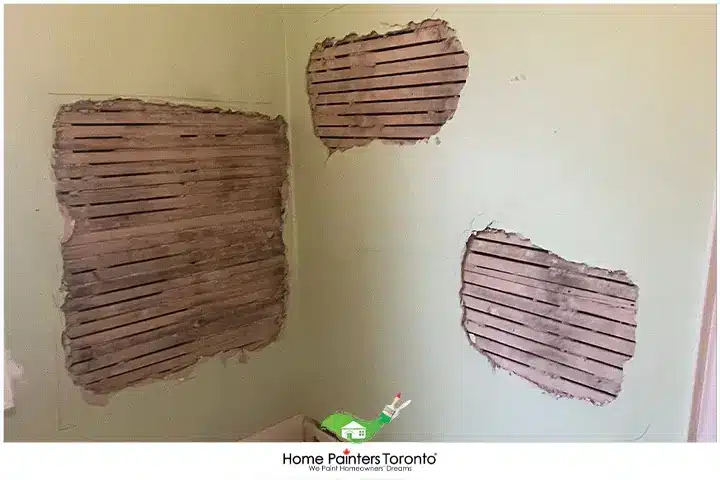
5. Dust and Cleanliness
Skim coating drywall can be messy, particularly when sanding the joint compound. The fine dust created during sanding can easily spread throughout the room and the entire house if proper precautions are not taken. This dust can be difficult to clean up and may cause respiratory issues for those with allergies or sensitivities. Minimizing dust and maintaining a clean workspace, such as using a drop cloth or plastic sheeting to protect the surrounding area and wearing proper protective gear, including goggles and a dust mask.
While drywall skim coating can be a challenging process, it’s not impossible to master with practice and patience. By understanding and overcoming potential difficulties, you can achieve a smooth, professional-looking finish on your walls and ceilings. If you’re unsure about your ability to skim coat successfully, consider hiring professional Toronto drywall contractors to ensure the best results for your project.
With the right approach and attention to detail, the skim coating can transform your space and create a beautiful, even surface for painting or wallpapering. To find reputable companies, type in keyphrases, such as “drywalling companies near me” or “drywall installers near me,” on your Google search engine.
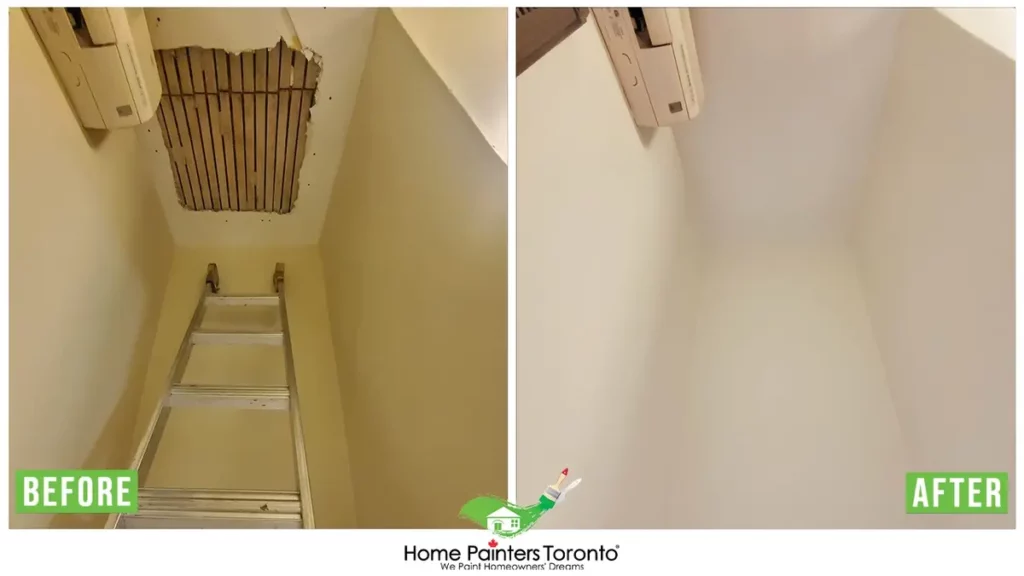
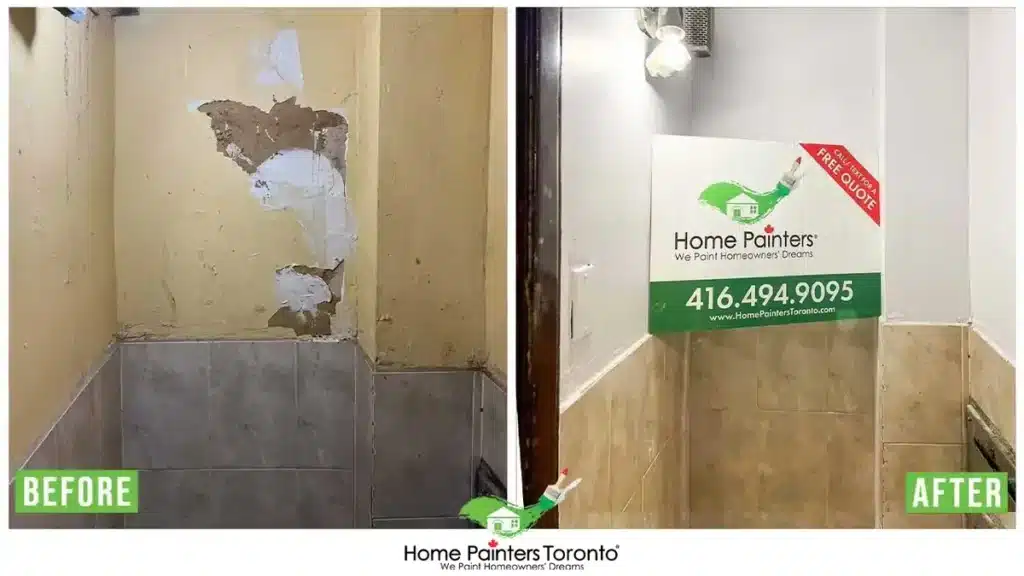
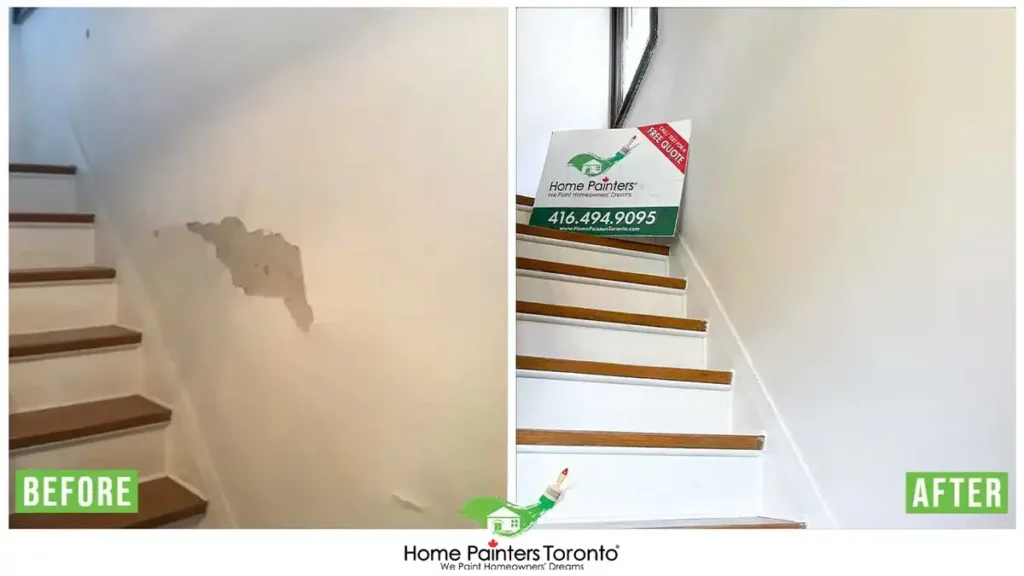
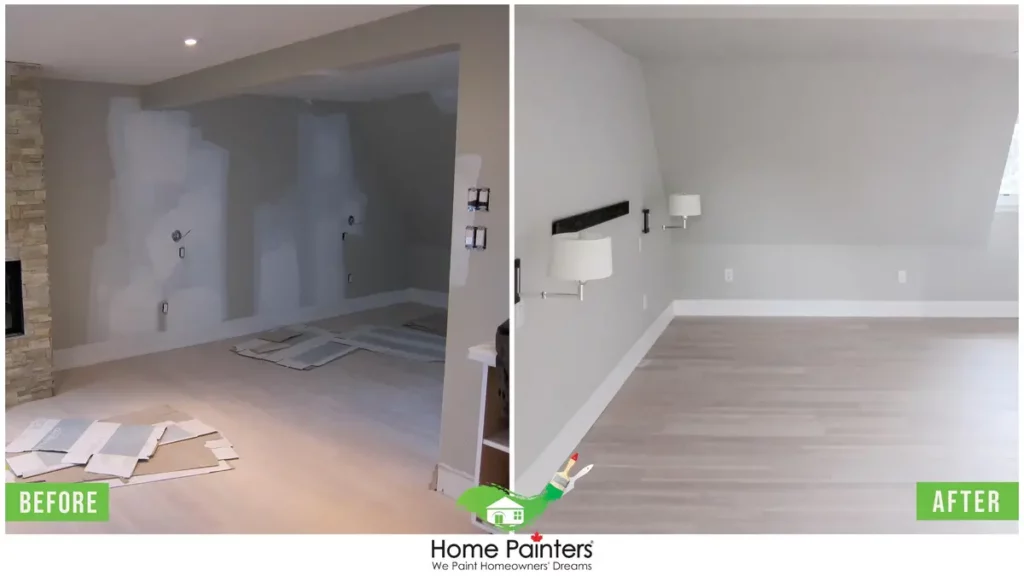
More Interesting Blogs Related to
“HOW TO SKIM COAT DRYWALL FOR BEGINNERS”
That was some tough work! If you’re not up for the work involved to skim coat drywall, why not let professional painters handle the work? Home Painters Toronto has been in the painting business for over 35 years. Give us a call at 416.494.9095 or email [email protected] for a FREE quote. And don’t forget to follow us on all our social channels below!





